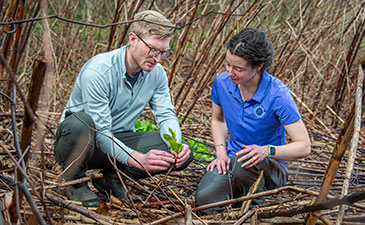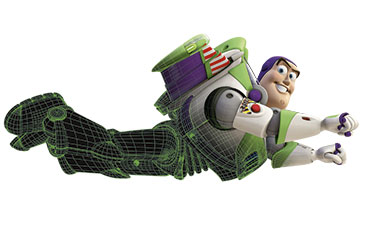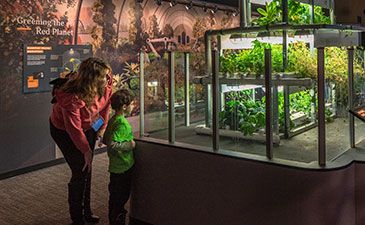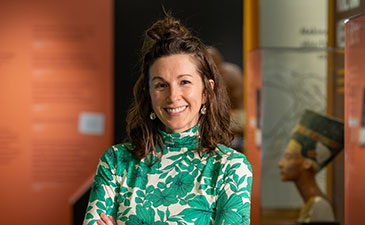The Dinosaur that Changed the World
Dippy continues to fascinate the public 125 years after it arrived at Carnegie Museum of Natural History.

Photo: Joshua Franzos
Dippy continues to fascinate the public 125 years after it arrived at Carnegie Museum of Natural History.

Botanists at Carnegie Museum of Natural History are researching new ways to discuss invasive plants.

The new Pixar exhibition at Carnegie Science Center offers insights into how the animation studio created some of its most iconic films.

Edible plants grown as part of the Science Center’s Mars exhibition inspire ideas for sustainably producing healthy food in challenging environments.
A new digital interactive will give visitors a glimpse of the Alcohol House, the somewhat secret home of one of the museum’s most visually fascinating, scientifically significant, and some might say creepiest collections: some 235,000 fluid-preserved amphibian and reptile specimens. The collection includes five extinct and 78 critically-endangered species.
Photo: Josh Franzos
The Section of Amphibians and Reptiles at Carnegie Museum of Natural History boasts an impressive collection of 252,107 specimens, most of which is housed in The Alcohol House. Built in 1907, the historic three-story Alcohol House was once described as “a three-way hybrid between a pickle warehouse, a reference library, and a mail-order establishment.” It is named for the 70 percent ethanol alcohol that collection managers use to preserve specimens and prevent degradation and the formation of bacteria.

Lisa Haney
Lisa Haney was in the seventh grade when her fascination with ancient Egypt began. She had a world history teacher who made it come alive through creative assignments, including one in which they mummified Cornish hens from the grocery store. Haney even created a shoebox diorama of Egyptian pharaoh Tutankhamun’s tomb. “One of the main reasons I wanted to work in a museum is to be able to touch all the things that are in the museum,” says Haney. Now, Haney is living her childhood dream as the Egyptologist and curator of Carnegie Museum of Natural History’s upcoming Egypt on the Nile exhibition. Since joining the museum in 2020, Haney has led a multiphase reimagining of the museum’s Egypt gallery that includes conservation of the 4,000-year-old Dahshur boat and ongoing work that visitors can view in the temporary exhibition The Stories We Keep: Conserving Objects From Ancient Egypt.
Trương Công Tùng, installation view of the state of absence—voices from outside, 2020, in the 58th Carnegie International, Courtesy of the artist and Carnegie Museum of Art.
Photo: Sean Eaton
Conservators play a critical role in not only the preservation of art but also its creation. They are partners with artists to realize their vision, even as they are stewards of it and the museum where it will be exhibited.